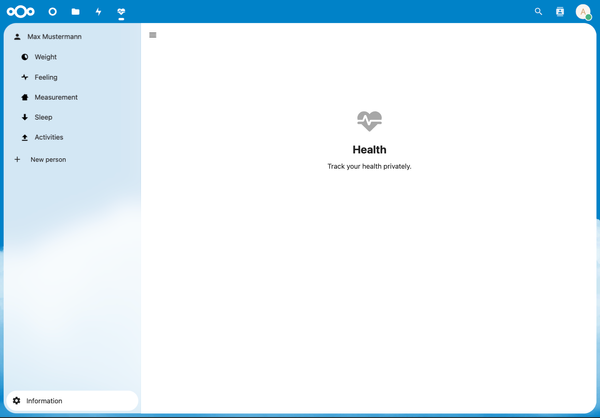Improving Reimbursement with EHR and Coding
Considering the information structures and adoption system of professionalism, healthcare has competed in several fields by integrating certain effective and automated systems. As the need grew for more information management, the need for more capable systems was also clear. Catering to the speedy workflow of medical practice required a shift from paper-based medical records to more integrated electronic forms of claim documentation.
The intricate world of medical billing and coding in healthcare requires expertise like alertness, attentiveness, informedness, and accuracy. However, no matter how equipped the practitioners are to work, errors will likely arise, specifically when the practice is done manually. Electronic Health Records have recently streamlined the practice to the needs of healthcare experts, and the center is the practice of medical coding services and billing, which has a significant impact. Moreover, patients can track their medical conditions, improvements, and necessary care they are recommended remotely with EHRs.
To support the complex healthcare revenue cycle and to deliver patient care, EHRs technology has potentially served the domain as it efficiently stores the numerous data and guarantees accuracy by its automatic structures. Medical practitioners can efficiently ensure the accurate implementation of codes to the diseases, treatments and correct errors also, as the technology has the potential to detect irregularities.
This blog will shed light on the description and function of EHRs and the ways medical practitioners can revolutionize reimbursement with EHR and coding.
Electronic Health Records EHRs and Medical Coding
Medical coding begins when a patient visits the hospital and makes an appointment with the physician as they report the visit or service in the patient's EHR. Using an automatic EHR helps the provider easily and accurately code the conditions and why they prescribed a specific treatment or procedure.
Electronic Health Records in healthcare are the digital version of a patient's medical history, records, and services that the provider ensures. This digitized copy of a patient's medical chart is an interconnected database that contains a part or overall record of patient information. Healthcare professionals share these EHRs with other authorized sources to access patient information whenever needed for analytical and clinical purposes.
Maximizing Revenue with Accurate Coding and EHR
If a medical practice faces frequent claim denials, rejection, and errors, investigating its medical coding is the utmost since it is solely responsible for revenue generation. However, the thing to consider is its accuracy and speed, the methods used, and whether the practice meets the current expectations of payers.
One of the major causes of claim denial is paying attention to the criteria the payers set for claim documentation. Since they keep changing the requirements, practitioners must fulfill those as coding inaccuracy directly leads to revenue management failure. Errors of specific coding and diagnosis are among the common factors of claim denials, and reworking these requires double the effort, and finance is a proven loss for organizations.
Modern Healthcare states that hospitals in the United States lose $262 billion yearly due to claim rejections or denials. If a hospital or practice cannot recover a denied claim, they must find alternative means of covering the expense. Generally, rejections and denials are caused by: Claim form mistakes (between 40% and 80% of medical bills contain mistakes), Code mistakes missed dates for submitting claims.
EHRs in healthcare have introduced numerous features over the years to streamline procedures like provider documentation, code search, and claim scrubbing. With more than 69 000 ICD-10 codes, providers are assisted with proper EHRs coding systems to reduce denial rates as the technology is integrated with Current Procedural Terminology CPT codes, ICD-9/10 codes, and the Health and Care Professional Council HCPC standards.
The Medical Coding Challenge
One of the major challenges that organizations of all sizes face is manual coding and billing in healthcare. Both practices provide the financial health of an organization that must be kept improving. However, EHRs' automated systems with several features allow medical professionals to handle proper coding, claim denials management, and charge capture crucial to successful billing operations. Physicians can now reassure themselves to save time, ensure higher levels of accuracy, and do billing and coding as smoothly as possible.
Ways to Get Improved Reimbursement with EHR and Coding
There is a variety of ways EHRs can improve reimbursement by handling coding accurately and other medical operations in healthcare:
EHRs document appointments and other procedures.
- Information about appointments, including visitation dates and notes
- Tests, procedures, and laboratory findings Immunizations
- Allergies
- Medication references to health
- Additional medical issues evidence from other healthcare professionals
EHRs provide detailed documentation to help providers record every step of the patient visit. This specific information helps healthcare professionals in EHR billing and coding practices. Moreover, they can get help to find the most accurate code assignment for a particular medical condition.
Manage and track the claim process
- An EHR contains all parts of a patient's medical record with practice
- practitioners can track what is happening with a patient's claim
- Office workers can make notes while a claim moves through billing practice
- EHRs can inform employees about the deadline for a certain action to complete
Reduce billing errors
Among the thousand codes, each assigned specifically to a specific condition, companies own their own code set and add new codes to the old ones. EHRs potentially identify and process multiple insurance provider's codes to the correct procedure.
Since the system is accessible, employees can make changes in codes and add notes about using particular numbers in the billing and coding process. It's simple to give the incorrect code to a particular procedure or mix up a few integers in a code. However, reducing such errors might be possible using EHRs to make and update handy, searchable lists and notes.
Improved Charge Capture:
By automatically linking surgeries, treatments, and medications to billing codes, they increase the effectiveness and precision of charge capture. Doctors can reduce the possibility that services will be forgotten or ignored by immediately inserting charges. Charge data can be exchanged automatically by linking EHRs with billing systems, which lowers the chance of human entry errors and expedites the billing process.
Save workers' time.
Patients can save time because they can access and view all of their information in one place. Medical personnel can save time by storing and using cloud-based EHR systems. Employees could use search functions to locate insurance claim papers and supporting materials rather than going through pages and pages of paper files. EHRs also store all patient data in one digital location, making it easier for offices to share and less likely for them to misplace it.
Faster Claim Submission and Reimbursement:
EHRs accelerate claim filing by electronically transmitting billing information to insurance carriers. When claims submitted on paper-based forms are no longer accepted, processing claims requires less time and administrative work. This is where a proficient dental billing company comes into play, seamlessly aligning with the automated coding and billing procedures within EHRs.
Access information
Easy-to-use EHRs are good EHRs. The best medical billing and EHR software are primarily or entirely straightforward after some initial orientation. However, medical practices must frequently train staff members when they adopt or update systems. Thanks to intuitive functions, people can easily use software systems and retrieve information from them. Additionally, they make it simple to add and save information for later use. Just a few of the duties that effective and efficient EHR systems could make possible include billing, filing and monitoring claims, and revenue collection.
Share information with patients.
Not just medical practitioners are interested in using EHRs. Patients desire information about their health. Patients can now retrieve and use it independently because of the increasing use of electronic gadgets and the internet. Information exchange could begin during their appointments.
According to the authors of one study, medical professionals should encourage this exchange by taking steps like:
- Before seeing a patient, review the EHRs for background information.
- To improve interpersonal relationships, say hello and engage with patients.
- Permit patients to view portions of their records, such as X-rays or test reports.
- Invite patients to assist with the creation of the charts.
Patients may be better informed about their conditions and care with this information. They may be better able to engage with insurance companies and other parties if they have this knowledge of the billing process.
Conclusion
The adoption of EHRs in medical coding has altered how healthcare businesses run the practice. Properly implementing these technologies can increase the accuracy, efficiency, patient satisfaction, and financial health of healthcare businesses, leading to endless success.
Inaccurate medical coding influences medical practice and affects patient experience and satisfaction. Unsatisfied patients negatively hinder the way of your organization's reputation. Insurance providers do not provide coverage if the listed service does not match the patient's claim.







